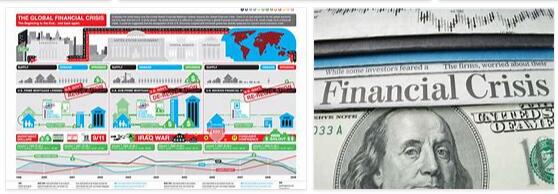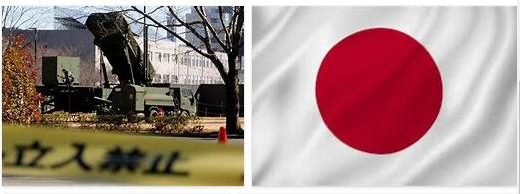A Financial Crisis in the Making Part II
From the summer of 2007 onwards, however, it was realized that the original lending (especially the subprime loans, see facts in No. 21, 2008) and the control of the individual loans in these composite products had not been as good as had been assumed. In many cases, therefore, the compound securities were associated with far greater risk than previously thought.
Banks and financial institutions therefore had to report losses and write down the value of their assets (loans). Thus, investors became uncertain
- on what the banks owned,
- on whether the banks themselves knew what they owned and
- on whether they told the whole and full truth.
In other words, investors gained less confidence in the banks; this also means that the banks gained less trust in each other. This is important as the banks in a modern financial system largely lend to and from each other in the interbank market (fact 3). This has created a mutual dependence – everyone is woven into a web. Violent fluctuations in the markets, fear of losses and enormous uncertainty now mean that many players choose to sit still.
5: USA 2008: Bank collapse
As a result of large losses on the sale of financial products, the investment bank Bear Stearns (USA) experienced major problems – acute problems in obtaining sufficiently readily available money – in March 2008. Rumors of bankruptcy spread. The bank then received crisis assistance from the New York branch of the central bank and was acquired by another major bank, JP Morgan .
On July 11, IndyMac , the largest mortgage bank in the United States, was taken over by the federal government. On September 7, it was reported that mortgage giants Fannie Mae and Freddie Mac were also in serious financial trouble and would be taken over by US federal authorities.
Barely a week later, another investment bank, Lehman Brothers , filed for bankruptcy. It was expected in advance that Lehman Brothers would also receive help from the US authorities if it should have serious problems. When they did not get it, trust in many other institutions also disappeared. In the days that followed, the investment bank Merill Lynch (taken over by Bank of America), the world’s largest insurance company AIG (taken over by the authorities) and the mortgage bank Washington Mutual (partly taken over by the authorities and partly by JPMorgan) collapsed . Several investment banks had a total lending volume of many times their own equity – Lehman with more than 30.
6: Global reach
Eventually, banks in other continents were also overtaken by the problems – among them German IKB, British Royal Bank of Scotland and Northern Rock, Swiss UBS, Belgian Fortis, Danish Roskilde Bank and several Icelandic and many more. Financial markets in Asia and Latin America are also affected. The increased lending and investment activity between financial institutions and across national borders – cf. the interdependence and vulnerability – contributed to “infection transmission” and chain reactions.
Although the problems originated in banking and financial institutions in the United States, according to SMARTERCOMPUTING, they quickly developed into a global crisis . Many financial institutions have close links with deposits and loans between each other and across continents. In fact, the regional financial markets are closest to one global financial market.
For example, a major German bank could invest in US securities through a subsidiary in Ireland or the Cayman Islands – often without German credit authorities being able to oversee the investment. Subsidiaries with problems occasionally dragged their parent bank into trouble. The crisis in the United States therefore spread rapidly to the whole world and to many financial and economic areas:
- financial markets, values have fallen sharply.
- Several equity funds and other funds received very low cash holdings and had to sell securities.
- Insurance companies and pension funds have holdings that have become significantly less valuable.
- Significant exchange rate turmoil.
In other words: A sharp downturn with higher unemployment and economic decline (recession) in many countries and on all continents has long been evident: stock indices have plummeted, consumption has fallen, jobs have disappeared, people have resigned, activity levels have fallen in many industries. However, the decline should not be exaggerated. The OECD expects the following growth in gross domestic product (GDP) in the member countries (30) of 1.4% in 2008, – 0.4% in 2009 and 1.5% in 2010.
Lack of trust in other players in combination with extensive uncertainty about the solvency of others has led to a liquidity crisis – lack of cash holdings among the players. Even core healthy businesses have trouble getting the credit they need. The actual blood circulation in the economic system has shifted to low gear. On the other hand, many would say that a large public sector can help stabilize the situation.
Fact 1: Who takes the risk?
Unlike in Norway, the banks in the USA bear the risk of lending. If a borrower is unable to service the debt, he has to sell forcibly and leave his house, it is the bank that takes over the property. The borrower gets rid of the debt as he moves out (but loses his values and can then not take out a new mortgage for several years). In Norway, the debt of the borrower is constantly attached; she does not get rid of the debt by moving out. But she also does not lose all her money if the property is not heavily mortgaged or sold very cheaply.












